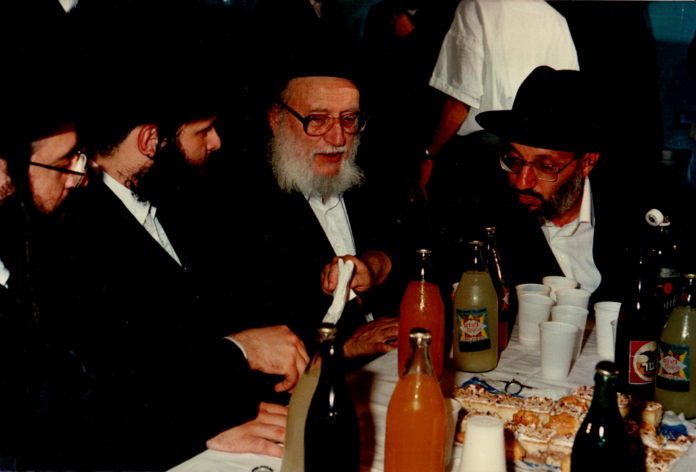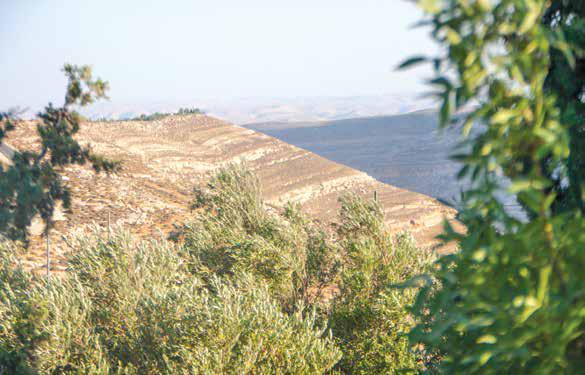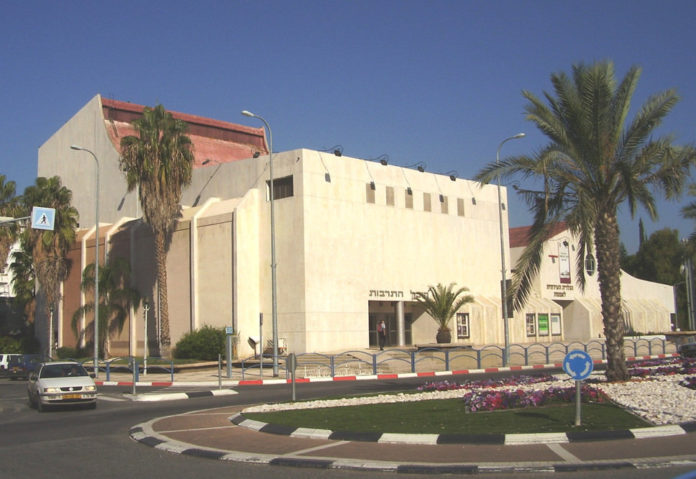
Various Perspectives and Experiences of English speakers Living in Eretz Yisroel
How We Made It in Eretz Yisroel
It was over fifty years ago when my husband, Meir Miller, first came to Eretz Yisroel as a bochur to learn in yeshiva. He had a strong desire to learn Torah in Eretz Yisroel and therefore worked hard as a waiter for a whole summer just to save up for a ticket (by boat, in case you were wondering). The difficulties that such a move involved did not daunt him.
He grew up in Providence, Rhode Island, in one of the few shomer Shabbos families there. As there were no options for proper chinuch in his hometown, from the age of eight and a-half he would commute daily to cheider in Boston, Massachusetts, a commute of over fifty miles that took an hour and a-half each way, all by himself. In the following years, he would take along his younger siblings as well. This arrangement lasted until he advanced to yeshiva high school in New York.
Not knowing anything about the yeshivos in Eretz Yisroel, he inquired about them at the Jewish Agency in New York. They suggested he enroll in one of them, but when he arrived at the yeshiva, he found that they could not accept him because they didn’t have room. He then decided to go to Yerushalayim. He was referred to a Zionist yeshiva there, but he felt the atmosphere just wasn’t right for him.
Soon thereafter he chanced upon a childhood friend from America while walking through the Geula neighborhood in Yerushalayim. This friend had been referred to Yeshivas Kamenitz and was slated for an interview with the rosh yeshiva, HaRav Yitzchok Scheiner. The friend suggested that Meir join him at the yeshiva where the rosh yeshiva was American-born, and several talmidim were from America.
Meir was accepted warmly into the yeshiva by Rav Scheiner, and was quickly absorbed into the atmosphere of Yerushalyim, including being exposed to many of its special personalities. It was clear to him that he was here to stay, with his future awaiting him in Yerushalayim.
About four years later, Rebbetzin Herman, the wife of R’ Nochum Dovid (son of R’ Yaakov Yosef of “All for the Boss” fame) suggested our shidduch. I was an American girl, the daughter of Holocaust survivors from Europe, who had come to visit Eretz Yisroel after my first year as a teacher in New York. I was staying by my aunt and uncle in the Yerushalayim neighborhood of Sanhedriya. Yerushalayim captured my heart, and I dreamt of building my life here.
We shared the dream of building a true Jewish Torah home and being zoche to doros yesharim mevorachim, not in Providence, not in New York, but in Yerushalayim—shel matah and shel ma’alah.
After getting married in the U.S., we came back and settled in Yerushalayim. It wasn’t easy, but no one promised me a life of roses. All we had was the shirts on our backs, no money and no “P.H.D.” (Papa has Dough). I knew that chazal say that Eretz Yisroel is only acquired through yissurim (by the way, Torah and Olam Haba, as well, are acquired through yissurim), so I decided to accept these yissurim with simcha!
Both of us were at a tremendous distance from parents and family, without the support that many young couples have. We really missed our family, but we did put in a lot of effort to make it here and build our own home by ourselves. We did have, though, the love and help of the Kamenitz rosh yeshiva and his wife, and of our dear aunt and uncle. As time went on, we also made many new friends. To quote Dovid HaMelech, Yerushalayim is the city “shechubera lah yachdav“—that makes all Yidden friends.
Throughout the years there were financial ups and downs. In one of the financially difficult periods, my husband, who had meanwhile received semicha, was offered a respectable rabbinic position in Providence with a high salary. It wasn’t easy to decline. We did have what to miss in the land we both grew up in, but Yerushalayim won out.
I think it was our firm resolve, perseverance, determination, and will power that brought about the tremendous Siyata Dishmaya that allowed us to fulfill our dream. Boruch HaShem and bechasdei HaShem, today we own a spiritual empire! Bli ayin hara, we built four generations here in Eretz Yisroel—children, grandchildren and a slew of great-grandchildren—all chareidim l’Dvar HaShem, bnei Torah, and all living in beautiful homes purchased here. They all have a chelka in Eretz Yisroel.
It all happened here in Eretz Yisroel, from scratch! HaShem saw we had the will and He did all the rest! We are very ordinary people, nothing special, so if we did it, you certainly can too.
“Ani Ma’amin” — My Beliefs
These are the beliefs that got me to decide, over fifty years ago—as an eighteen-year-old—that I was coming to live in Eretz Yisroel.
Without going into the essence of the mitzvah of yishuv Eretz Yisroel, and of the practical pros and cons, I firmly believe that Eretz Yisroel is the safest place in the world to live in.
Why? Because the Torah says that this is the Land which HaShem’s “eyes” are always on, throughout the whole year.
Is this not enough of a guarantee for me to be satisfied? What safer place in the world can there be?
Also, I firmly believe that Moshiach can come any day. I surely do not want to get caught up in the rush hour when throngs of Yidden from all over the world will be trying to come here to Eretz Yisroel when Moshiach arrives.
I want to be settled here before Moshiach comes! I want to have enough time to get dressed in my best to greet him and be able to absorb the highlight of the most magnificent moment of the world’s existence.
– Meir and Leah Miller, Sanhedriya, Yerushalayim
This article is part of our Eretz Chemdah series featuring Anglo-Chareidim living in, settling, and building up Eretz Yisroel. A joint project of Avira D’Eretz Yisroel, Kedushas Tzion and Naava Kodesh, coordinated by Yoel Berman – info@naavakodesh.org.
Reprinted with permission from Naava Kodesh.

